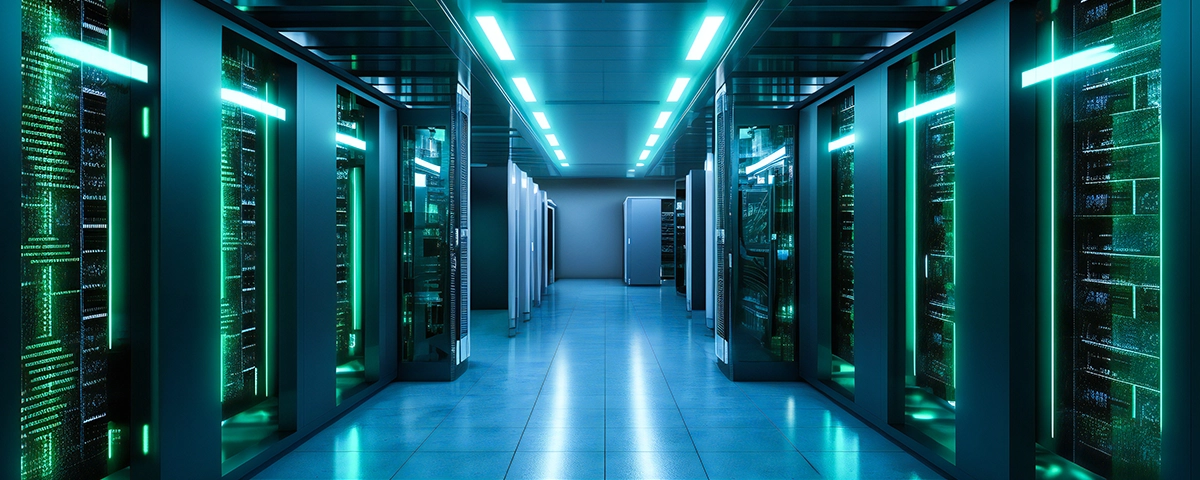Server rooms are, traditionally, the most uninviting of spaces – hot, airless, and large, often taking up a vast amount of valuable floor space and generating massive amounts of energy just to keep equipment cool.
Server rooms house an abundance of electronic equipment, including servers, cabinets, communication equipment, cooling systems, and power infrastructure. Operating 24/7, these spaces consume enormous amounts of energy and generate significant heat. Excessive energy use contributes to carbon emissions, making sustainable targets increasingly difficult to achieve. So, exactly how green is your server room?
Server rooms – the environmental facts
Server rooms are typically very environmentally unfriendly, guzzling energy and generating heat. According to X. Zhang’s 2017 report on data centres, energy consumption for cooling IT equipment can account for more than 40% of total energy consumption. Efficient cooling for data centres is essential for reducing operational costs and environmental impact. (source)
Recent data from the IEA (International Energy Agency) indicates that data centres currently account for approximately 1-1.5% of global electricity consumption, translating to about 0.9% of energy-related greenhouse gas emissions. (source)
According to the Royal Institution of Chartered Surveyors (RICS), projections suggest that, without significant efficiency improvements and increased use of renewable energy, data centres could consume up to 8% of global electricity by 2030. (source)
Additionally, according to the IEEE (Institute of Electrical and Electronics Engineers), the broader information and communication technology (ICT) sector is anticipated to be responsible for up to 14% of global carbon emissions by 2040. (source)
These projections underscore the critical need for adopting energy-efficient technologies and sustainable practices within data centers to mitigate their environmental impact.
How can you implement a greener server room?
A simple and effective way to reduce energy consumption is to replace your server room with a micro data centre. Micro data centres are small, self-contained units that offer all the functionality of traditional server rooms but on a much smaller scale.
One of the primary advantages of micro data centres is their ability to significantly reduce energy consumption. Traditional server rooms often require large amounts of power for both computing operations and cooling systems. In contrast, micro data centres are designed to operate with minimal energy input, utilising advanced cooling techniques and energy-efficient components. This reduction in energy consumption translates to lower operational costs and a smaller carbon footprint.
Zella Pro micro data centre – a greener alternative to server rooms
A Zella Pro is a compact, portable, and secure micro data centre that eliminates the need for a traditional on-premise server room.
Reduced energy consumption – The Zella Pro dramatically lowers energy consumption compared to traditional server rooms. This is achieved through advanced cooling techniques and energy-efficient components, resulting in reduced operational costs and a smaller carbon footprint.
Efficient cooling system – Cooling is a significant energy drain in traditional server rooms. The Zella Pro, utilises innovative cooling solutions and advanced airflow management systems to optimise the cooling process, enhancing energy efficiency.
Scalability and modular design – The Zella Pro’s modular nature allows for easy scalability without extensive infrastructure investments. Businesses can adapt capacity as needed, using only the energy required for current operations and reducing waste from over-provisioning.
Optimised Power Usage Effectiveness (PUE) – The PUE measures data centre energy efficiency. The Zella Pro typically achieves much lower PUE ratios than traditional facilities. This is due to advanced power management systems and energy-efficient hardware, ensuring optimal energy use.
Get in touch today to learn how Zella Pro can help reduce your energy costs while creating a greener, more sustainable IT environment.
This blog was originally published in January 2021 and updated in January 2025.






